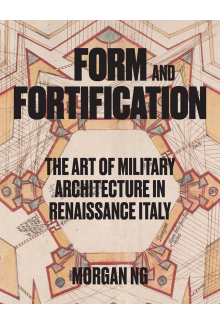- Titulinis
- Meno ir laisvalaikio literatūra
- Architektūra, dizainas
- Form and Fortification
Form and Fortification
Balsavo 0
ISBN: 9780300272048
Leidimo metai: 2025
Puslapių skaičius: 256
Formatas: Kieti viršeliai
Formatas: 27.9×21.6
Leidimo metai: 2025
Puslapių skaičius: 256
Formatas: Kieti viršeliai
Formatas: 27.9×21.6
Kaina:
Šių parametrų produkto neturime
Likutis pakankamas
Iš leidyklos gausime per 3-5 savaitės. Galimas vėlavimas
Turime sandėlyje. Pristatymas Lietuvoje 1-4 d.d.
Iš leidyklos gausime per 3-5 savaitės. Galimas vėlavimas
Pristatymo sąlygos
Aprašymas
A revelatory exploration of a crucial Renaissance art form – military architecture – and its unexpected connections with contemporary aesthetic, cultural, and technological innovations. Urban fortifications were the most colossal artistic achievements of the Italian Renaissance. Celebrated sculptors, painters, and architects such as Michelangelo, Bramante, Leonardo, Francesco Paciotto, and Antonio da Sangallo the Younger collaborated with humanists and military commanders to design citadels and ramparts. Unprecedented in their geometric sophistication, constructional ambition, and physical grandeur, these monuments profoundly transformed the shape and experience of the built environment. "Form and Fortification" challenges the long-held assumption that military architecture was merely an instrument of warfare, restoring the practice to its central place at the nexus of sixteenth-century creative and cultural endeavors. Through a rich array of drawings, archival manuscripts, early printed sources, treatises, and realized works, this book traces the remarkable exchanges between fortification and other arenas of art, design, and engineering. Charting these cross-disciplinary convergences, Morgan Ng develops the novel concept of "cognate technologies" to describe military and civil structures that coevolved and came to share striking formal affinities. Defensive earthworks bore the same shapes as terraced gardens; subterranean artillery chambers resembled artificial grottoes and hydraulic tunnels; and fortified passageways morphed into palatial galleries. The relationships among such cognate technologies, this book contends, are essential for understanding the interconnected nature of early modern artistic invention.
Atsiliepimai (0)
Palikite atsiliepimą

